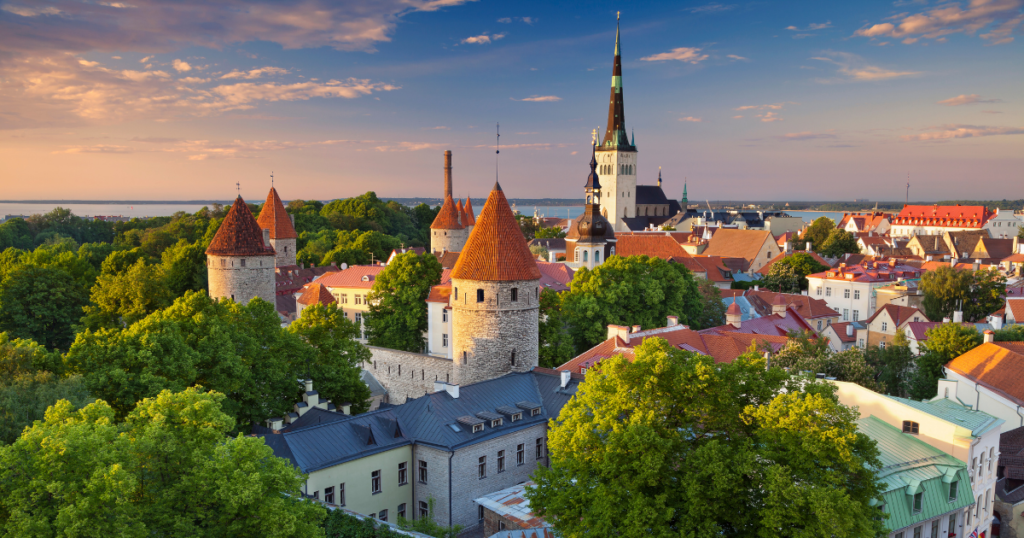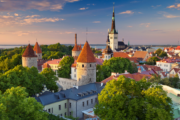Tallinn, Estonia
Firstly, let me just start by saying how is Tallinn not more well-known? Since returning from this medieval time warp many people have asked me what Tallinn is like and why I loved it so much. The only description that I have come up with, that comes close to explaining it is that it is similar to the beautiful Prague only smaller with less tourists, a very real sense of being in medieval times and a food scene that rivals most other countries I have visited to date. I seriously do not believe it is possible not to fall in love with Tallinn and most importantly to have a bad meal! Even the dinner in the Christmas market rivalled many restaurant meals!
Tallinn is a walled ancient city which is filled to the brim with nooks and crannies just waiting to be explored and beautiful photographs just waiting to be captured.
There are very few places in the world where I would even dream about mentioning the airport but I have to say even Tallinn’s airport is something truly special. From the gorgeous “help yourself” library to the quaint coffee shops this is one airport I would be happy to be delayed in.
Where to Stay:
Accommodation: Boutique and Eco-Friendly Hotels
- Hotel Telegraaf: Located in the heart of the Old Town, this historic hotel combines luxury with eco-friendly practices. Its commitment to sustainability includes energy-efficient systems and locally sourced amenities. Why? – Combines luxury and sustainability in a historic setting.
- Hestia Hotel Ilmarine: A former factory turned eco-conscious hotel, it offers modern comforts with a focus on reducing its carbon footprint through green initiatives. Why? – Industrial charm with a commitment to green practices.
- Klaus K Hotel: A boutique hotel that emphasizes sustainable practices such as water conservation, recycling programs, and use of eco-friendly materials. Why? – Stylish accommodation with a strong environmental ethos.
- Savoy Boutique Hotel: Offers a blend of Art Deco charm and modern eco-friendly initiatives, including energy-saving technologies and organic toiletries. Why? – Classic elegance with modern eco-conscious amenities.
- Hotel L’Ermitage: Situated near the Toompea Hill, this hotel focuses on sustainability with initiatives like solar panels and waste reduction programs. Why? – Modern comfort with an emphasis on sustainability.
Where to Eat:
Dining: Farm-to-Table and Eco-Friendly Restaurants
- NOP Café and Shop: An eco-conscious café offering organic, locally sourced dishes with a zero-waste philosophy. Why? – Combines delicious organic meals with a zero-waste ethos.
- Von Krahli Aed: Located in the Old Town, this restaurant focuses on organic and locally sourced ingredients, offering both traditional and innovative dishes. Why? – Traditional Estonian flavors with an eco-friendly twist.
- Pegasus: A modern restaurant that emphasizes seasonal, local produce, and sustainable seafood. Why? – Fresh, seasonal cuisine with a commitment to sustainability.
- Rataskaevu 16: Known for its cozy atmosphere and menu featuring local, organic ingredients, this spot is a favorite among locals and tourists alike. Why? – Cozy, authentic dining with local organic ingredients.
- F-hoone: Located in the Telliskivi Creative City, this industrial-style restaurant serves up creative dishes made from sustainable ingredients. Why? – Creative cuisine in an industrial-chic setting focused on sustainability.
What to do:
- Old Town Walking Tour: Explore Tallinn’s medieval Old Town with a guided tour that highlights its history, architecture, and hidden gems. Why? – Dive into the rich history and architecture of Tallinn’s Old Town.
- Telliskivi Creative City: Visit this vibrant area filled with art galleries, studios, and eco-friendly shops, all promoting local creativity and sustainability. Why? – A hub of local creativity and sustainable practices.
- Seaplane Harbour Museum: An interactive maritime museum showcasing Estonia’s naval history, with exhibits focusing on sustainability and marine conservation. Why? – Engaging maritime history with a focus on conservation.
- Kumu Art Museum: Discover Estonian art from the 18th century to contemporary pieces, with an emphasis on eco-friendly museum practices. Why? – Explore Estonian art in an environmentally conscious museum.
- Kopli Lines Train Ride: Take a scenic train ride through the countryside to see the lesser-known parts of Tallinn and its surrounding areas. Why? – Experience Tallinn’s natural beauty and local life outside the city center.


